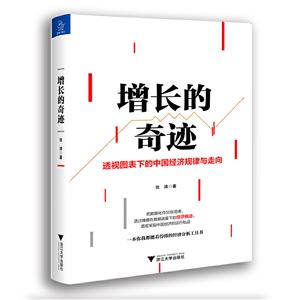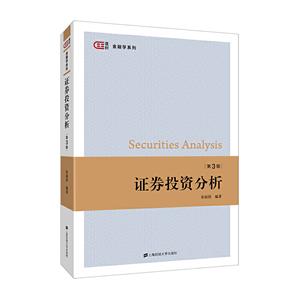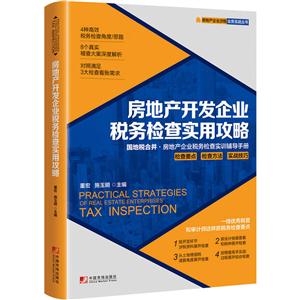债券市场-分析与策略-(第七版)

|
债券市场-分析与策略-(第七版)作者:弗兰克·J·法博齐(Frank J.Fabozzi) 开 本:16开 书号ISBN:9787300126470 定价:69.0 出版时间:2010-09-01 出版社:中国人民大学出版社 |
债券市场-分析与策略-(第七版) 本书特色
《债券市场:分析与策略(第7版)》:高等院校双语教材·金融系列。
债券市场-分析与策略-(第七版) 内容简介
本书是一本经典的固定收益证券教科书,自1989年**版问世以来,一直颇受读者欢迎。本书旨在介绍债券市场产品,提供债券定价分析技术和利率变化时债券风险的量化分析方法,并为实现客户目标提供投资组合策略。在*新的第七版中,作者对上述各个领域进行了更新。在产品方面,主要是对结构性产品(抵押支持证券、资产支持证券和债务担保债券)和信用衍生工具的*新发展进行了更新。在分析技术方面,主要对利率和信贷风险模型的分析技术进行了更新。
本书既可以作为学生学习固定收益证券类课程的教材,也可以作为金融界从业人员的投资指南,还是cfa考试的**参考书。
债券市场-分析与策略-(第七版) 目录
第1章 导论第2章 债券定价
第3章 债券收益率的衡量
第4章 债券价格的波动性
第5章 影响债券收益率和利率期限结构的因素
第6章 国债与政府机构证券
第7章 公司债务工具
第8章 市政债券
第9章 非美国债券
第10章 住房抵押贷款
第11章 政府机构抵押转手证券
第12章 政府机构抵押担保证券和剥离式抵押贷款支持证券
第13章 非政府机构住房抵押贷款支持证券
第14章 商业不动产抵押贷款和商业不动产抵押贷款支持证券
第15章 资产支持证券
债券市场-分析与策略-(第七版) 节选
《债券市场:分析与策略(第7版)》是一本经典的固定收益证券教科书,自1989年**版问世以来,一直颇受读者欢迎。《债券市场:分析与策略(第7版)》旨在介绍债券市场产品,提供债券定价分析技术和利率变化时债券风险的量化分析方法,并为实现客户目标提供投资组合策略。在*新的第七版中,作者对上述各个领域进行了更新。在产品方面,主要是对结构性产品(抵押支持证券、资产支持证券和债务担保债券)和信用衍生工具的*新发展进行了更新。在分析技术方面,主要对利率和信贷风险模型的分析技术进行了更新。《债券市场:分析与策略(第7版)》既可以作为学生学习固定收益证券类课程的教材,也可以作为金融界从业人员的投资指南,还是cfa考试的**参考书!
债券市场-分析与策略-(第七版) 相关资料
插图:Assuming that all four bonds are of the same credit quality, which is most attractive tothis investor? An investor who selects bond C because it offers the highest yield to maturityis failing to recognize that the investment horizon calls for selling the bond after five years,at a price that depends on the yield required in the market for 10-year 11% coupon bondsat the time. Hence, there could be a capital'gain or capital loss that will make the returnhigher or lower than the yield to maturity promised now. Moreover, the higher coUpon onbond C relative to the other three bonds means that more of this bond's return will bedependent on the reinvestment of coupon interest payments.Bond A offers the second highest yield to maturity. On the surface, it seems to be par-ticularly attractive because it eliminates the problem of realizing a possible capital losswhen the bond must be sold prior to the maturity date. Moreover, the reinvestment riskseems to be less than for the other three bonds because the coupon rate is the lowest.However, the investor would not be eliminating the reinvestment risk because after threeyears the proceeds received at maturity must be reinvested for two more years. The yieldthat the investor will realize depends on interest rates three years from now on two-yearbonds when the proceeds must be rolled over.The yield to maturity does not seem to be helping us to identify the best bond. How,then, do we find out which is the best bond? The answer depends on the investor's expecta-tions. Specifically, it depends on the investor's planned investment horizon. Also, for bondswith a maturity longer than the investment horizon, it depends on the investor's expecta-tions about required yields in the market at the end of the planned investment horizon.Consequently, any of these bonds can be the best alternative, depending on some reinvest-ment rate and some future required yield at the end of the planned investment horizon.The total return measure takes these expectations into account and will determine the bestinvestment for the investor, depending on personal expectations.The yield-to-call measure is subject to the same problems as the yield to maturity. First,it assumes that the bond will be held until the first call date. Second, it assumes that thecoupon interest payments will be reinvested at the yield to call. If an investor's plannedinvestment horizon is shorter than the time to the first call date, the bond may have to besold for less than its acquisition cost. If, on the other hand, the investment horizon is longerthan the time to the first call date, there is the problem of reinvesting the proceeds from thetime the bond is called until the end of the planned investment horizon. Consequently, theyield to call does not tell us very much. The total return, however, can accommodate theanalysis of callable bonds.
管理 金融/投资 投资融资
在线阅读
- 最新内容
- 相关内容
- 网友推荐
- 图文推荐
| [高考] 2022 西安电子科技大学《软件工程》大作业答案 (2022-04-25) |
| [家长教育] 孩子为什么会和父母感情疏离? (2019-07-14) |
| [教师分享] 给远方姐姐的一封信 (2018-11-07) |
| [教师分享] 伸缩门 (2018-11-07) |
| [教师分享] 回家乡 (2018-11-07) |
| [教师分享] 是风味也是人间 (2018-11-07) |
| [教师分享] 一句格言的启示 (2018-11-07) |
| [教师分享] 无规矩不成方圆 (2018-11-07) |
| [教师分享] 第十届全国教育名家论坛有感(二) (2018-11-07) |
| [教师分享] 贪玩的小狗 (2018-11-07) |






